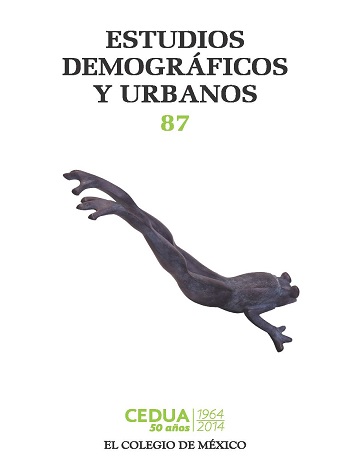Research articles
Published 2014-09-01
Keywords
- internal migration,
- ascendant and descendant spatial mobility,
- migrants’ socio-demographic characteristics
How to Cite
Sobrino, J. (2014). Internal Migration and Size of Town in Mexico. Estudios Demográficos Y Urbanos, 29(3), 443–479. https://doi.org/10.24201/edu.v29i3.1468
Metrics
Views/Downloads
-
Abstract2089
-
PDF (español)872
-
En línea (español)8318
Downloads
Download data is not yet available.
Copyright (c) 2014 Estudios Demográficos y Urbanos

This work is licensed under a Creative Commons Attribution-NonCommercial-NoDerivatives 4.0 International License.


